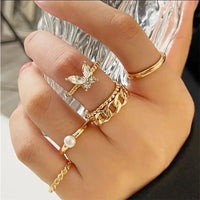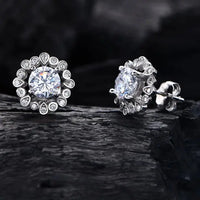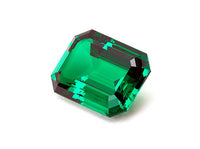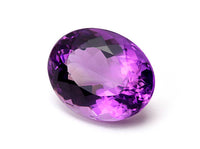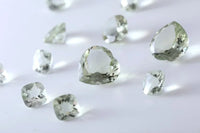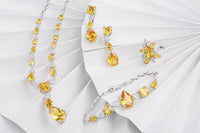When it comes to luxury jewellery, diamonds have long been regarded as the pinnacle of beauty and elegance. But in recent years, an alternative gemstone has been gaining popularity for its brilliance, affordability, and ethical sourcing: moissanite. If you’re in the market for a dazzling stone but want to understand the differences between moissanite and lab-grown diamonds, we’ve got you covered. In this blog post, we’ll break down the science behind these two stones, helping you make an informed decision for your next luxury jewellery purchase.

1. Origins: Natural Diamonds, Lab-Grown Diamonds, and Moissanite
The first key difference between moissanite and diamonds lies in their origins.
- Natural Diamonds are formed deep within the Earth’s mantle over billions of years. They are mined and often come with concerns over environmental impact and ethical sourcing.
- Lab-Grown Diamonds, on the other hand, are created in a controlled environment using high-pressure and high-temperature (HPHT) or chemical vapor deposition (CVD) methods. These diamonds are chemically identical to natural diamonds but are more eco-friendly.
- Moissanite, discovered by scientist Henri Moissan in 1893, is a naturally occurring gemstone, but the ones used in jewelry today are lab-created. It’s made from silicon carbide and boasts a brilliance that rivals diamonds.

2. Brilliance: A Showdown of Sparkle
When comparing the sparkle of moissanite to diamonds, moissanite comes out ahead in some areas. Its refractive index—which measures how light bends as it passes through the gemstone—is higher than that of diamonds.
- Moissanite has a refractive index of 2.65 to 2.69, resulting in a rainbow-like sparkle that is often more intense than diamonds.
- Diamonds, with a refractive index of 2.42, offer a more classic, white-light brilliance, creating that iconic diamond sparkle. For those who prefer a more subtle shine, diamonds may be the better choice.

3. Durability: Which Gemstone Stands the Test of Time?
Hardness is crucial when it comes to gemstones, especially in rings and everyday wear jewelry.
- Diamonds rank a 10 on the Mohs hardness scale, making them the hardest substance on Earth. They are incredibly resistant to scratches and damage, ideal for engagement rings and high-end pieces.
- Moissanite is also durable, ranking a 9.25 on the Mohs scale, which makes it more than suitable for daily wear. While it is slightly softer than diamonds, it is still highly resistant to scratching and chipping.
4. Price: Affordable Luxury Without Compromise
One of the biggest selling points for moissanite is its affordability.
- Moissanite is often a fraction of the cost of a diamond, making it an excellent choice for those who want luxury without breaking the bank. Depending on size and quality, moissanite can cost up to 90% less than a diamond of equivalent size.
- Lab-grown diamonds, though generally more affordable than natural diamonds, are still priced higher than moissanite. However, for buyers who want a gemstone that is chemically identical to a diamond, lab-grown options offer a cost-effective alternative.

5. Ethical Considerations: A More Responsible Choice
In today’s world, ethical sourcing and environmental impact are significant considerations when purchasing luxury jewelry.
- Natural diamonds are often criticized for their connection to conflict regions and their environmental footprint due to mining practices.
- Both moissanite and lab-grown diamonds are excellent alternatives for the eco-conscious consumer. Moissanite is completely lab-created, and lab-grown diamonds avoid the negative effects of mining, providing a more ethical and sustainable option.

6. Choosing Between Moissanite and Diamonds: What’s Right for You?
At the end of the day, the choice between moissanite and lab-grown diamonds depends on your preferences, values, and budget.
- If you’re looking for brilliance and affordability, moissanite offers an unbeatable sparkle at a fraction of the price.
- If you want a gemstone that is chemically identical to a natural diamond but more eco-friendly, a lab-grown diamond may be the perfect choice.
Both gemstones offer stunning beauty and durability, ensuring you can wear your jewelry with pride, knowing you’ve made an informed and ethical decision.

Sparkle Responsibly with Dazzle Dime
At Dazzle Dime, we’re proud to offer luxury jewellery that combines ethics with elegance. Whether you choose moissanite or lab-grown diamonds, you’re not just investing in a beautiful piece of jewellery—you’re investing in the future of sustainable, responsible luxury.
Unlock your sparkle with Dazzle Dime, and explore our exquisite collection of moissanite and lab-grown diamond jewellery today.


